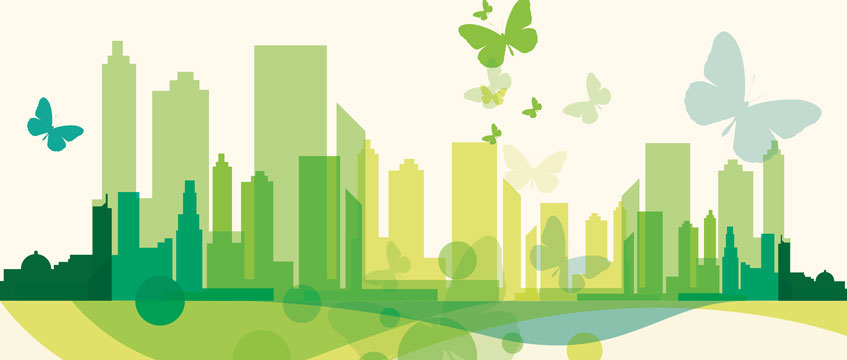What a difference two years of reduced movement makes. This year’s EG Sustainable Cities Index shows a marked improvement across a number of the metrics we use to rank cities on how sustainable they are. More net zero-rated buildings, improvements in emissions, cleaner air, more biodiversity and greater access to EV charging infrastructure. As the deadline to meet the UK’s net zero goal and those of individual cities draws closers, words seem to be turning into action.
Bristol continues to lead, ranking top in five of our 17 sustainability criteria, but with just six years left to meet its net zero target, one could argue it needs to be leading on many more. Bristol topped the ranks in terms of recycling, biodiversity and distance to green space – alongside being the first of the 12 cities in the ranking to declare a climate emergency and setting itself the toughest net zero target – but falls behind in terms of EPC A+ and B and above-rated buildings and access to EV infrastructure. It is also one of the more densely populated cities with one of the highest population growth projections.
Despite being a city focused around its port, Southampton ranked top of EG’s index in terms of emissions, with just 2.6 tonnes of carbon emissions per capita. Bristol was close behind with 2.8 tonnes per capita and Glasgow in third with 2.9 tonnes per capita. While emissions are the lowest, this did not translate to air quality, with data showing a fine particulate measure of 4.3. Not the worst in our ranking – that title goes to Cardiff where air quality has declined from a fine particulate measure of 5.7 in 2021 to 7.4 this year.
Edinburgh tops the league in terms of the finest quality of air. Take a big deep breath in the city where air quality has improved from a fine particulate measure of 5.7 to 2. The Scottish city has also seen decent improvements in its emissions, improving from four tonnes per capita to 3.3, in EV charging availability (up from 24.3 chargers per 100,000 people to 34.1) and biodiversity (improving from 6,539 species within 10km of the city centre to 6,683).
When it comes to green infrastructure, Nottingham and Sheffield come out on top. Nottingham appears to be winning at encouraging drivers to switch to electric, with some 58.4 EV charging sites per 100,000 people. This is up from 43.9 per 100,000 people in 2021 and some 13 charging points per 100,000 people ahead of its nearest rival, Leeds.
The most environmentally friendly form of transport, of course, is walking. Here, Sheffield is strides ahead of the other cities, with a walkability score of 71% – and access to the Peak District for even more walking. Birmingham comes in second in terms of walkability with a score of 56%, while Glasgow languishes at the bottom of the league with a score of just 33%.
Overall, however, the UK’s cities are stepping up their game when it comes to becoming greener places to live, work and play.
There are more green buildings for us to work in, air quality is improving, emissions are down and the number of UK cities (in this index) appearing on the CDP’s Cities A list has more than doubled. In last year’s ranking, just Bristol and Newcastle were deemed impressive enough to make it on to the list, which ranks cities leading the charge on climate mitigation. This year, five cities are listed, with Edinburgh, Manchester and Nottingham joining last year’s cities.
But with just 18 years left on the clock before the last of the cities listed need to hit their net zero goals there is still a lot of work left to do.
To send feedback, e-mail samantha.mcclary@eg.co.uk or tweet @samanthamcclary or @EGPropertyNews











